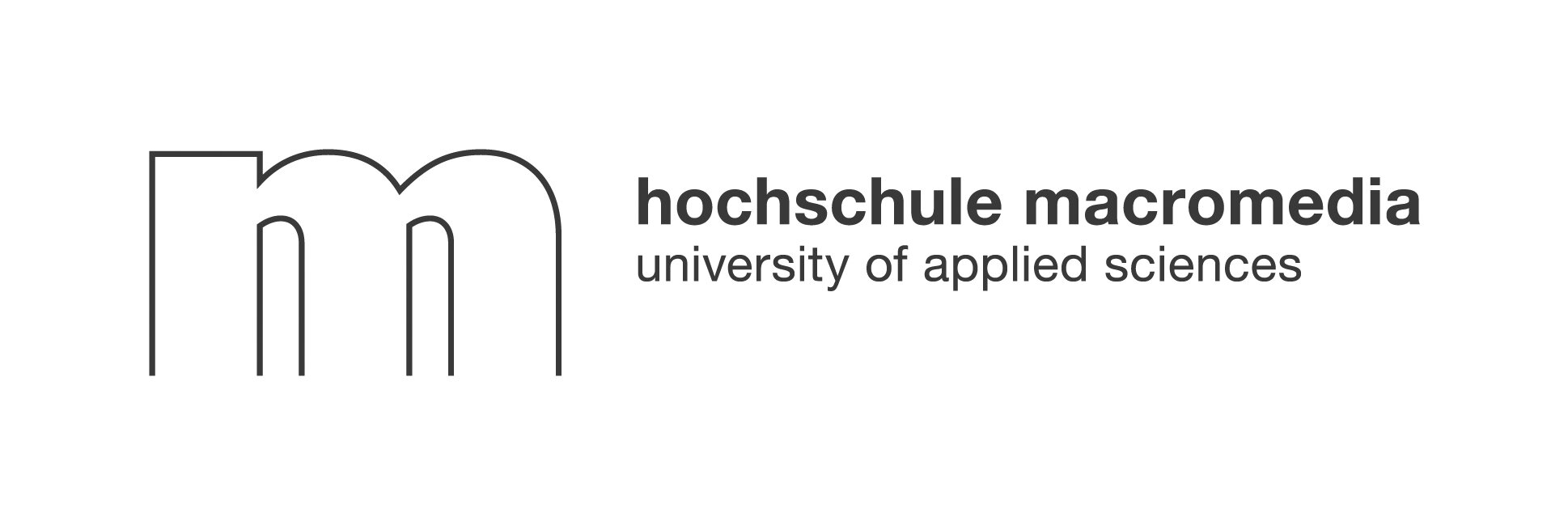Creating engaging and meaningful employee events is a challenge many organizations face. Traditional approaches often miss the mark, leaving employees feeling disconnected, especially in hybrid and remote settings. This article explores fresh strategies to transform workplace events into dynamic experiences that truly engage employees and foster genuine connections. By reimagining how events are planned and executed, companies can overcome participation barriers and create memorable experiences that resonate with their teams.
Engagement is not a checkbox, but a journey toward genuine connection.
1. Understanding the Value of Employee Event Participation
Employee event participation is more than a metric; it is a crucial element of a culture that values every worker's input. The business case for active involvement in company events rests on how well-connected employees feel with their organization. When participation is high, teams work better together, resulting in increased innovation and mutual support.
The Business Case
Companies realize that functional teamwork begins with mutual respect and authentic sharing. When employees engage in organized events, the outcomes often include improved efficiency and morale. These participatory opportunities allow team members to contribute ideas that shape company policies and strategies. Leaders who encourage contributions notice enhanced problem-solving capabilities and faster adaptation to change. For example, a well-planned team-building exercise may lead to new insights that radically improve the workflow.
Participation transforms a workplace into a community that listens and adapts.
Furthermore, modern organizations understand that a dynamic workplace culture is key to retaining talent. Research consistently shows that employees who feel heard and valued are more likely to remain loyal to the company, thereby reducing turnover and improving overall productivity.
Engagement and Cultural Benefits
Employee event participation strengthens cultural bonds by encouraging continuous dialogue among team members. When employees come together in a relaxed yet structured event, they build trust and a shared sense of mission. Such interactions often lead to organic, cross-departmental collaboration, where ideas and creative energy flow freely. In hybrid or remote settings, creating moments of togetherness becomes even more critical to break the isolation gap.
Engaged employees contribute more actively during regular work hours. This heightened connection fosters an environment where openness benefits not only individual growth but also the company's bottom line. Moreover, when employees witness real impact from their contributions, they feel more empowered to lead initiatives and innovate. In this light, embracing innovative event strategies can spark change across the entire organization.
- Empowers individuals to express their creativity
- Drives team synergy through shared experiences
- Cultivates a positive work environment
- Enhances organizational resilience
Employee event participation, when built upon clear objectives and empathetic leadership, paves the way for a workplace that is as fun as it is effective.
2. Building a Culture of Engagement in Events

Creating a welcoming atmosphere lies at the heart of cultivating a participatory workplace. A culture of inclusion is built by making employees feel valued before an event begins. Leaders must recognize that successful events depend on genuine connection rather than mere attendance.
Creating a Sense of Belonging
Businesses that invest in building belonging see tremendous returns. To encourage authentic engagement, event planners need to consider elements like location, timing, and format. Events designed with warmth and accessibility in mind attract employees who are eager to participate, rather than those who attend just out of obligation. Crucially, initiatives that are co-created with team input tend to resonate better with the workforce.
When planning event activities, companies are advised to ask for feedback and learn the interests of their workforce. A small focus group or survey can reveal the preferences of employees who might otherwise feel left out. In doing so, organizations move beyond traditional formats and embrace more flexible, enjoyable settings.
- Consider employee preferences when choosing themes
- Create welcoming and easily accessible venues
- Foster open and transparent communication across teams
- Value each employee’s unique input
Interestingly, anecdotal evidence supports that relaxed, small-group events offer a superior foundation for deep connections. Reflecting on current trends, many companies are now favoring intimate settings over large gatherings as a way to ensure everyone has a voice. Employee event participation thrives in spaces where employees truly feel they belong.
Leadership and Role Modeling
Role modeling is key to igniting participation. Leaders who actively take part set the tone for others. This active display of commitment sends a powerful message: every contribution matters. Executive support and hands-on involvement encourage employees to mirror these behaviors. Moreover, leaders who share personal stories or vulnerabilities create a safer space for authentic interactions during events.
In practice, this means leaders should not only attend events but also facilitate conversations and activities that draw out hidden ideas. Participatory leadership creates a ripple effect, inspiring teams to collaborate naturally. During sessions, managers can ask open-ended questions and invite input without fear of judgment. This approach fosters an environment where everyone feels valued.
Employee event participation increases when leaders proactively demonstrate that these gatherings are opportunities for mutual growth and genuine connection.
True leadership inspires participation by valuing every voice in the room.
By incorporating these strategies, companies transform ordinary events into lively platforms for collaboration, paving the way for lasting cultural change.
3. Designing Impactful Employee Events
Innovative event design is at the core of maximizing genuine engagement. When organizations rethink the format of traditional gatherings, they open the door to truly dynamic experiences that improve both well-being and collaboration. Modern workplaces now look at every event as a chance to innovate rather than repeat the status quo.
Types of Employee Events
There are many types of events a company can host. Many organizations have shifted from large, impersonal conventions to intimate, personalized micro-events that invigorate social bonds. For example, a company might organize small yoga sessions, running meetups, or cultural gatherings designed for 3-4 participants. These micro-events allow for deeper conversations and authentic connections while still fostering a shared sense of purpose. In remote settings, these intimate gatherings make it easier for teams to participate and feel involved.
To clarify the options available, consider this comparative table:
Employee event participation in small settings has shown to have a more lasting impact compared to overwhelming large-scale events. This approach aligns with current trends that favor quality interactions over quantity.
Innovative Event Ideas
Innovation in event design means creating memorable experiences that cater to diverse interests. One idea is to use AI-driven event planning platforms that tailor activities to individual preferences. This technology can recommend events ranging from wellness sessions to creative cultural outings based on employee interests and schedules. In hybrid workplaces, this becomes even more significant as employees can participate from anywhere.
For instance, anecdotal reports describe how a pilot program for company runs and yoga sessions led to greater enthusiasm and improved well-being. AI chat-orchestrated coordination helps logistics run smoothly, ensuring each participant finds an event that resonates with their personal interests. Such tailored experiences can dramatically improve overall satisfaction and productivity.
- Use personalized suggestions based on past interests
- Offer flexible timing that suits various time zones
- Integrate fun, interactive activities into each event
- Provide options that cater to both social and solitary preferences
Dynamic events adapted to personal interests inspire authentic engagement.
With these approaches, Employee event participation is recharged with fresh energy, making each gathering more impactful and memorable. Adding a touch of technology ensures that events are not just well-attended but truly transformative.
Employee event participation, when innovated with creative formats and personalized approaches, paves the way for lasting, positive changes in workplace culture.
4. Promoting and Communicating Events Effectively
Effective communication turns an ordinary event into a must-attend experience. Careful messaging and creative invitations are the keys to drawing employees in. Companies must treat promotional materials as integral parts of the event itself.
Crafting Compelling Invitations
An engaging invitation sets the stage for success by sparking genuine interest. Instead of generic announcements, invitations should highlight unique features and behind-the-scenes insights that emphasize why the event is special. Attention to visual design and clear language is essential. Leaders might include a brief video message to add a personal touch.
Employee event participation benefits when the message feels authentic and inviting. Clear communication that outlines what employees can expect helps reduce uncertainty. Including elements like a fun teaser or a countdown can build anticipation.
- Use vibrant visuals that embody the event’s theme
- Share personal anecdotes in the invitation
- Maintain a tone that is friendly and accessible
- Encourage responses by hinting at surprise elements
An invitation that excites is an invitation that connects deeply.
Utilizing Multiple Communication Channels
To reach every employee, information must spread across various platforms. Email blasts, intranet updates, and even casual channels like messaging apps can work together to ensure that the event’s appeal reaches all corners of the organization. When employees receive consistent messaging from multiple channels, they feel more engaged and informed.
A coordinated plan is best mapped out with an organized approach. Consider this ordered list for effective promotion planning:
- Draft clear, exciting messages for each communication tool.
- Schedule regular reminders leading up to the event.
Additionally, direct testimonials or quotes from past events, such as:
Every event felt tailor-made for us, truly changing our outlook on work.
Clear communication transformed mundane meetings into standout experiences.
Employee event participation is strengthened when communication is consistent. Using the right mix of channels elevates the perception of the event and builds credibility.
5. Leveraging Technology and Gamification for Participation

Embracing technology is critical in today’s workplace. Modern tools not only streamline event management but also enhance engagement through interactive experiences. Advancements in digital event planning create opportunities for tech-enhanced connections.
Digital Tools and Platforms
Innovative digital platforms allow organizations to organize events quickly and efficiently. AI-driven tools analyze employee preferences to arrange micro-events that are both accessible and exciting. This personalized approach is especially beneficial in hybrid or remote settings, where coordination can otherwise be challenging.
For many companies, leveraging technology means tracking participation and gathering instant feedback, which in turn refines future events. Such tools support clear visual dashboards that let organizers gauge real-time participation levels. Integration with existing HR systems ensures that every event is in line with overall engagement strategies.
Employee event participation is boosted when employees experience effortless coordination through AI-powered systems. These solutions transform event planning from a logistical challenge into a dynamic, personalized journey.
Gamification Strategies
Adding fun elements like challenges, competitions, or reward schemes can transform participation into a game. This method creates excitement and a light competitive spirit that inspires everyone to get involved. For example, small teams may earn points by participating in wellness activities or cultural meetups, with rewards such as extra break time or fun merchandise.
- Incentivize participation with creative rewards
- Establish friendly competition among teams
- Use a leaderboard to showcase engagement progress
- Celebrate achievements in a public and supportive manner
Gamification turns routine events into exciting adventures.
Such gamified approaches not only improve immediate engagement but also encourage continuous improvement over time. Employee event participation becomes less about obligation and more about the joy of being part of something dynamic and innovative. Through technology and creative rewards, companies can transform every event into a memorable, impactful experience.
6. Measuring Success and Gathering Employee Feedback
Success in modern events is measured not only in attendance but in the quality of engagement. Accurate feedback and clear performance metrics ensure that events are continuously improved. With active feedback loops, companies can evolve and refine their strategies to suit employee needs.
Key Performance Metrics
Organizations should track metrics such as satisfaction scores, repeat participation, and overall impact on productivity. Surveys and digital tools help quantify these metrics. By using specific KPIs, companies can gauge whether their initiatives are truly making a difference.
Employee event participation is best optimized when organizers review data consistently. This data-driven approach makes it possible to pinpoint which elements worked well and where adjustments are needed.
Feedback Best Practices
Regular feedback sessions where employees share their event experiences are crucial. Companies should create safe spaces for honest opinions without fear of repercussions. A few best practices include:
- Conduct post-event surveys
- Hold informal discussion sessions
- Use anonymous feedback tools
- Review suggestions during team meetings
Listening to feedback transforms events into ongoing success stories.
By gathering and acting on feedback, organizations can ensure that future events better meet employee needs and preferences. As the culture evolves, continuous improvement strategies keep the experience fresh and highly anticipated.
7. Overcoming Challenges and Sustaining High Participation
Despite best efforts, challenges in sustaining high engagement levels are common. Addressing obstacles and embracing continuous change are key steps in ensuring lasting success. Organizations must be agile and responsive to unforeseen hurdles.
Addressing Common Barriers
Employee event participation sometimes suffers from rigid structures or logistical difficulties. Common barriers include inconvenient timing, lack of personal relevance, or insufficient integration with hybrid work realities. Leaders must acknowledge these challenges and work proactively to remove them. Simplifying participation through flexible scheduling or digital event options can help overcome these hurdles.
Consider this ordered list detailing a strategy for tackling barriers:
- Identify the specific obstacles through employee surveys.
- Implement flexible scheduling and digital alternatives.
During this process, some companies have begun leveraging AI-powered platforms to understand and address attendance gaps. One pilot program reported significant improvements after switching from large gatherings to dynamic micro-events led by digital coordination.
Continuous Improvement Strategies
Sustaining engagement requires a commitment to ongoing innovation and adaptation. Constantly evaluating the success of each event leads to better insights and refined methods for boosting participation. Regularly updating event formats keeps the momentum going and ensures that each experience feels fresh and inviting.
- Regularly update event formats based on feedback
- Pilot new interactive elements and measure their impact
- Encourage cross-team collaboration for innovative ideas
- Reward continuous contributions with tangible benefits
Overcoming challenges requires a spirit of innovation and a willingness to adapt.
Employee event participation can reach new heights when organizations actively work to break down barriers. By embracing a mindset of continuous improvement, companies can maintain a dynamic and engaging workplace culture.
In the midst of this dynamic landscape, Neroia steps in as a catalyst for change. Neroia offers a social employee benefits platform designed to enhance workplace culture by fostering organic connections. Its AI-driven recommendations for small-group activities—such as yoga sessions, running meetups, or cultural gatherings—provide a refreshing alternative to outdated, uninspiring gatherings.




